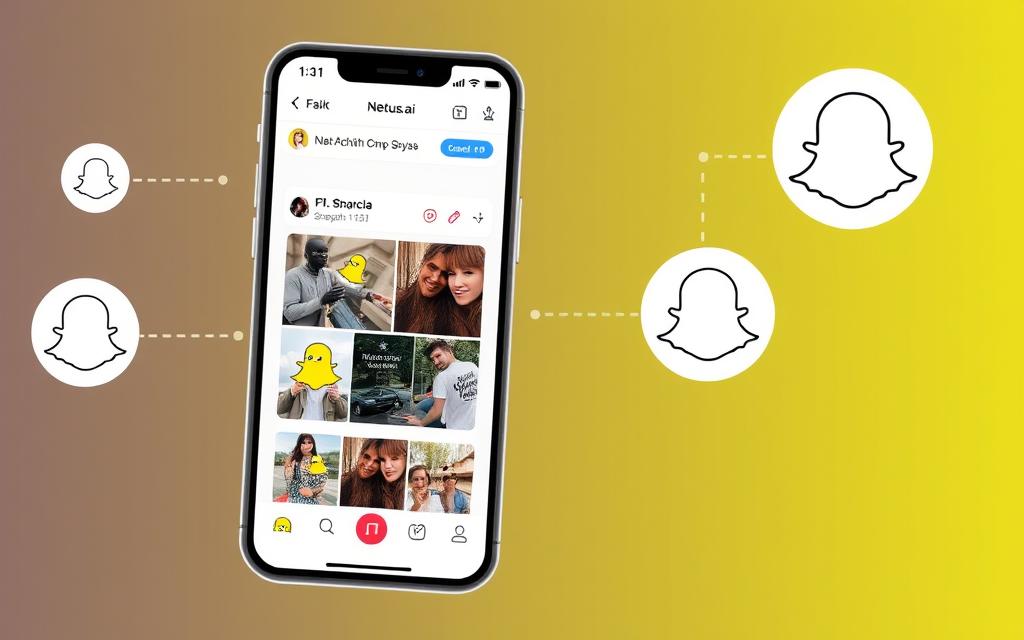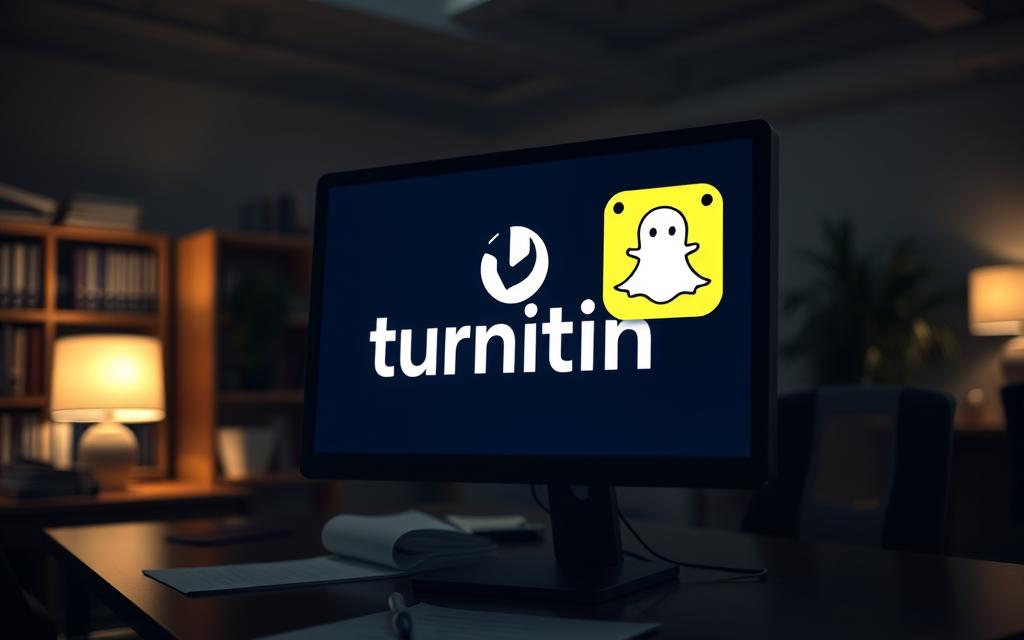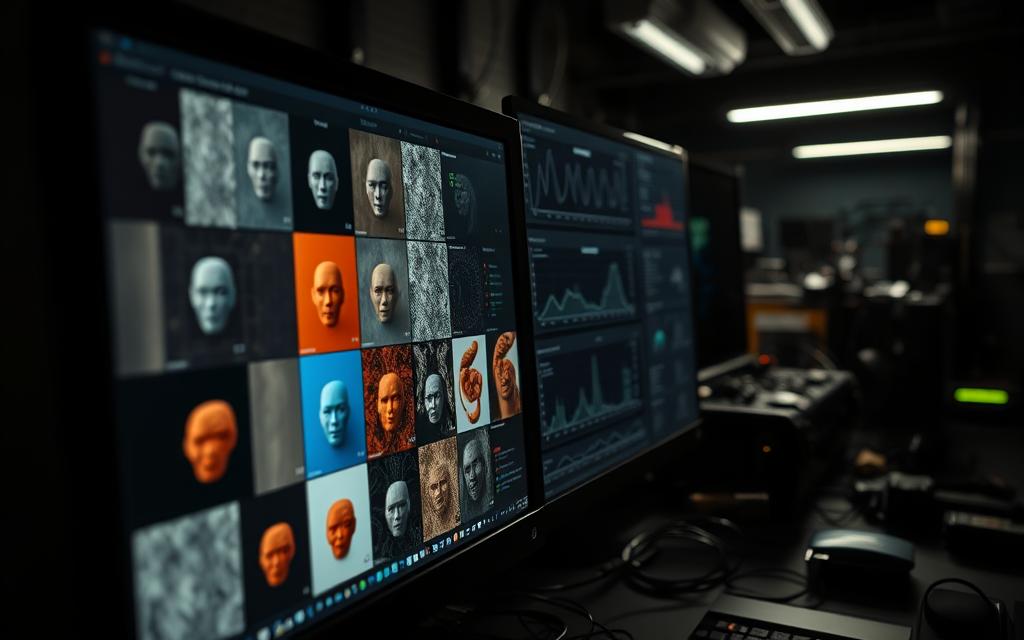The rise of AI technology on social media platforms has led to a growing concern among users about identifying whether they are interacting with AI-generated content. Snapchat, a popular social media platform, has integrated various AI features, including the “My AI” chatbot powered by OpenAI’s GPT-3.5.
This chatbot can generate text responses, provide recommendations, and engage in conversations, making it increasingly important for users to understand how to detect AI-generated content. The need for detection tools has become more pressing as users become more concerned about authenticity and privacy on social media platforms.
This comprehensive guide will explore the various detection tools available for identifying AI content on Snapchat and their effectiveness, enabling users to maintain authentic interactions.
Understanding Snapchat’s AI Features
By incorporating ‘My AI,’ Snapchat is enhancing its platform with AI capabilities that facilitate more engaging and personalized user interactions. This integration signifies a notable shift in how users engage with the platform, leveraging AI for a more tailored experience.
What is “My AI” on Snapchat?
“My AI” on Snapchat is a chatbot powered by OpenAI’s GPT-3.5 technology. It is designed to provide users with personalized conversations and recommendations. The AI-driven chatbot can respond to user queries, offer suggestions, and generate text-based content that mimics human-like conversation patterns.
The sophistication of “My AI” lies in its ability to understand and process user inputs, creating contextually relevant responses. This makes it challenging to distinguish between interactions with a human and those with the AI chatbot.
How Snapchat Uses AI Technology
Snapchat utilizes AI technology to enhance user experience through personalization, content creation assistance, and interactive features. Beyond text generation, Snapchat’s AI features extend to visual elements such as Dreams, AI Lenses, and AI Snaps, allowing users to create or edit images using artificial intelligence.
| AI Feature | Description | Functionality |
|---|---|---|
| My AI | Chatbot powered by GPT-3.5 | Personalized conversations and recommendations |
| Dreams | AI-driven visual content creation | Allows users to create personalized visual content |
| AI Lenses | Augmented reality filters using AI | Enhances user experience with interactive filters |
| AI Snaps | AI-assisted image editing | Enables users to edit images with AI-driven tools |
Understanding these AI features is crucial for identifying AI-generated content on the platform. As Snapchat continues to integrate AI tools, the line between human and AI-generated content becomes increasingly blurred.
Common Signs of AI-Generated Content
To determine whether you’re interacting with a human or AI on Snapchat, it’s crucial to understand the characteristics of AI-generated content. AI detection tools can be used to check if a Snapchat message is from AI, using smart computer programs to analyze words and sentences.
Text Patterns and Writing Style
AI-generated text on Snapchat often exhibits distinctive patterns that can help users identify it. These include unusually formal language in casual contexts, perfectly structured sentences, and repetitive phrasing. The writing style of AI content typically lacks the natural inconsistencies, slang, and personalized expressions that characterize human communication on Snapchat. When examining text messages from suspected AI accounts, look for responses that seem overly comprehensive or encyclopedic rather than conversational. For more information on detecting AI-generated content, you can visit Netus.ai.

Visual Cues and Watermarks
Snapchat has implemented visual cues to help users identify AI-generated content, including the sparkle icon (✨), the Snap Ghost with sparkles watermark, and Context Cards that provide additional information about AI-generated images. AI-generated images may contain subtle inconsistencies such as unusual pixel patterns, unnatural shadows or reflections, anatomical errors (like extra fingers), or faces with asymmetrical features. Being aware of these telltale signs can significantly improve your ability to distinguish between human and AI-generated content on Snapchat.
Is Snapchat AI Detectable by Detection Tools?
The capability of detection tools to identify Snapchat AI is a topic of increasing interest. Many users are now turning to AI detection tools to verify the authenticity of content on Snapchat.
How AI Detection Tools Work
AI detection tools analyse text patterns, sentence structures, and linguistic features to determine whether the content was generated by artificial intelligence or written by a human. These detection tools employ sophisticated algorithms trained on millions of examples of both human and AI-generated text to identify subtle differences between them. When examining Snapchat content, they look for statistical patterns in word choice, sentence complexity, and textual consistency characteristic of AI-generated content.
Limitations of Current Detection Methods
Despite their sophistication, current detection methods face significant limitations when applied to Snapchat content, particularly with short, casual messages that don’t provide enough text for thorough analysis. Most detection tools struggle with visual content analysis, focusing primarily on text-based detection while leaving AI-generated images or videos largely unexamined. The effectiveness of these tools is further compromised when AI-generated content has been edited or paraphrased by humans, creating a hybrid that’s more difficult to categorise.
Users should understand that no detection tool offers 100% accuracy, making it essential to combine technological detection with human judgment. As AI technology continues to evolve, detection tools must constantly update their algorithms to keep pace with increasingly sophisticated AI content generation capabilities.
Popular AI Detection Tools for Snapchat Content
As Snapchat’s AI features become more prevalent, users are seeking effective methods to detect AI-generated content. Several tools have emerged to address this need, offering varying capabilities in identifying AI-written text.
GPTZero
GPTZero is a popular tool designed to detect AI-generated content. It analyses text for patterns typical of AI writing, such as repetitive phrasing and unnaturally perfect sentence structures. GPTZero provides a “perplexity” score, measuring the complexity and unpredictability of text.

Copyleaks AI Content Detector
Copyleaks AI Content Detector employs advanced algorithms to analyse text and provide a percentage score indicating the likelihood that content was AI-generated. With a claimed accuracy rate exceeding 99%, it examines linguistic patterns, sentence structure, and vocabulary usage.

Netus.ai
Netus.ai offers rapid analysis capabilities for both short and long-form content, making it suitable for examining brief Snapchat messages. It looks for patterns in the writing that match AI tools, providing a clear report on the likelihood of AI generation.

For optimal detection accuracy, experts recommend using multiple tools rather than relying on a single detection method. These tools are most effective when analysing text-based content from Snapchat’s “My AI” feature.
Can Turnitin Detect Snapchat AI?
Turnitin, a leading plagiarism detection tool, faces challenges in identifying content generated by Snapchat’s AI. While Turnitin has developed sophisticated AI detection capabilities, its effectiveness against Snapchat’s AI features is limited.
Turnitin’s AI Detection Capabilities
Turnitin’s AI detection tool analyses text for patterns, consistency, and writing styles characteristic of AI-generated content. Its algorithms can flag text generated by advanced AI systems like ChatGPT and GPT-3.5. However, the tool is not flawless and faces challenges with content that deviates from academic writing styles.
Effectiveness Against Snapchat’s AI Features
The effectiveness of Turnitin against Snapchat’s AI features is limited primarily because Snapchat AI often generates visual content or short text snippets that fall outside Turnitin’s detection parameters. According to user reports, content generated by Snapchat’s AI and used in academic work has sometimes evaded Turnitin’s detection systems, particularly when edited or integrated with original content.
| Detection Tool | Effectiveness Against Snapchat AI | Limitations |
|---|---|---|
| Turnitin | Limited | Optimised for academic writing, not visual or short-form content |
| Other Detection Tools | Varies | May require additional methods for comprehensive detection |
Turnitin continues to update its algorithms to improve detection capabilities, but the rapidly evolving nature of AI technology creates an ongoing challenge for comprehensive detection. Educational institutions may need to supplement their approach with additional detection methods to maintain academic integrity.

Step-by-Step Guide to Identifying AI Content on Snapchat
Identifying AI-generated content on Snapchat requires a multi-faceted approach. To effectively detect Snapchat AI, users need to examine both the text and visual elements within the app.
Examining Text Messages and Responses
When examining text messages on Snapchat, begin by assessing the response time. AI typically responds much faster than humans, often providing immediate, comprehensive answers. Look for linguistic patterns such as overly formal language or perfect grammar in casual contexts. Additionally, pay attention to how the account handles nuanced questions or sarcasm, as AI often struggles with contextual understanding.
Analysing Visual Content for AI Markers
When analysing visual content, check for Snapchat’s official AI indicators such as the sparkle icon (✨) or the Snap Ghost with sparkles watermark. Examine images carefully for telltale AI generation signs, including unnatural lighting, inconsistent shadows, or anatomical errors.
Using Multiple Detection Methods for Better Accuracy
For more thorough detection, use one or more specialised AI detection tools. Copy suspicious text from Snapchat and paste it into multiple tools such as GPTZero, Copyleaks, and Netus.ai to compare results. Cross-referencing findings from different tools can provide a more accurate assessment of whether the content is AI-generated. By combining technological tools with human judgment, users can improve the accuracy of AI detection on Snapchat.
Common Mistakes When Detecting AI-Generated Content
Users often make critical errors when trying to detect AI-generated content. The process is fraught with challenges, particularly on platforms like Snapchat where messages are typically short and informal.
False Positives and False Negatives
One of the primary issues with AI detection is the occurrence of false positives and false negatives. False positives happen when detection tools incorrectly identify human-written content as AI-generated, often due to highly structured or formal writing that resembles AI patterns. Conversely, false negatives occur when AI-generated content goes undetected, particularly if it has been edited or paraphrased to evade detection. The Turnitin checker and similar tools struggle with short-form content, making it difficult to accurately analyse Snapchat messages.
Overreliance on Single Detection Methods
Many users rely too heavily on a single detection method, which can lead to inaccurate results. Research indicates that even advanced tools like the Turnitin checker may only detect approximately one-third of AI-generated content. It is essential to use multiple detection methods and consider the context of the content. The casual nature of Snapchat communications presents particular challenges, as AI has become adept at mimicking informal human conversation patterns. Therefore, a combination of detection tools and human judgment is necessary for more accurate identification.

Future of AI Detection: Staying Ahead of Evolving Technology
The rapid evolution of AI technology is making it increasingly difficult to detect AI-generated content. As AI models become more sophisticated, they are capable of producing highly realistic text and images that challenge current detection methods.
Advancements in AI Generation Technology
New AI models, such as diffusion-based models, are creating content with unprecedented realism. These models can produce images with smooth skin, soft lighting, and perfect facial features, making them difficult to distinguish from human-generated content. According to recent observations, “diffusion-based AI models are creating visual content with unprecedented realism, eliminating many of the obvious flaws that detection tools previously relied on to identify AI-generated images.”
- AI generation technology is advancing at a remarkable pace, producing increasingly sophisticated text.
- Diffusion-based AI models are creating highly realistic visual content.
How Detection Tools Are Adapting
In response to these advancements, detection tools are evolving to implement more sophisticated algorithms. These algorithms examine subtle linguistic patterns and statistical anomalies in AI-generated text. For instance, Turnitin and similar platforms are investing heavily in research to improve their detection capabilities.
| Detection Method | Description | Effectiveness |
|---|---|---|
| Linguistic Pattern Analysis | Examines subtle patterns in language use | High |
| Statistical Anomaly Detection | Identifies unusual statistical patterns in text | Medium |
| Watermarking | Embeds identifiable markers in AI-generated content | Potential |
As AI technology continues to evolve, it is crucial to stay informed about the latest developments in detection tools and methods.
Conclusion
Detecting AI-generated content on Snapchat is a complex task that requires a combination of technological tools and human judgment. To effectively identify AI-generated content, one must consider multiple factors, including response patterns, linguistic style, and visual cues. While specialised AI detection tools can help, they should be used as part of a broader assessment strategy. It’s also important to understand that detecting Snapchat AI is not straightforward and depends on the type of content and detection method used.
As AI technology continues to evolve, both generation and detection capabilities will advance. Staying informed about the latest developments in AI detection tools and techniques is essential. Users should be aware that writing styles and response patterns can indicate AI-generated content. Ultimately, maintaining a healthy skepticism and developing your own ability to recognise the subtle signs of AI-generated content may prove more valuable than relying solely on automated detection tools.
The question “Is Snapchat AI detectable?” doesn’t have a simple yes or no answer. The effectiveness of detection varies based on content type and detection method. By combining human judgment with technological tools, users can improve their ability to identify AI-generated content on Snapchat.






